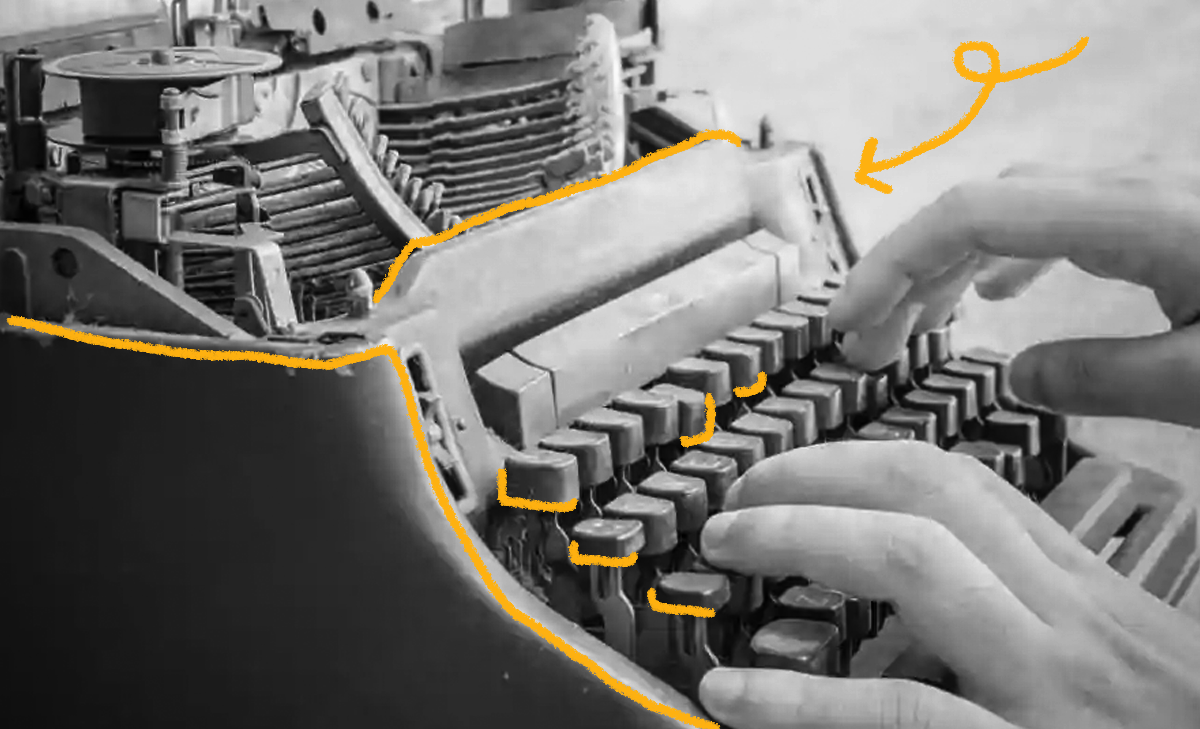Early Versions
In 1714, Henry Mill patented the first writing machine, which he called a “Machine for Transcribing Letters.” Little is known about his machine, however, and it appears that it may never have been built. More than a century later, an American named William Burt invented the first typographer, a precursor to the typewriter, in 1830. His machine used a dial to select letters rather than individual keys. Although Burt created the machine to help him increase efficiency in his job as a government surveyor, the dial design made it slow going, so it was not a very practical solution.
The First Typewriter
The first typewriter was patented by Christopher Latham Sholes in 1868. During the summer of 1867, Sholes worked with machinist Samuel W. Soulé and fellow inventor Carlos Glidden to develop the machine. By 1873, they had created 50 units, but because they were unable to sell them, they sold the production rights to gun manufacturer Philo Remington. In 1874, the first Remington typewriter appeared. It was sold by E. Remington & Sons and featured only capital letters. Four years later, the Remington No. 2 debuted; it was the first typewriter to offer both uppercase and lowercase letters.
The QWERTY Key Layout
Perhaps the most lasting impact of the typewriter is the QWERTY key layout. It was invented by Sholes as a way to reduce key jamming on his typewriter. He originally tried an alphabetic layout but ran into issues with jamming. But when he moved three of the most common letters (E, T, and A) to the left-hand side, he found that the layout slowed typists down enough to avoid jamming. In 1932, the rival Dvorak keyboard was introduced by William Dealey and August Dvorak. Their alternative layout made typing faster and more accurate, but it never caught on because the QWERTY layout was already so entrenched. And indeed, we still use the QWERTY key layout today on computer keyboards and cellphones all over the world!

An Explosion in Popularity
In the 1890s, John Thomas Underwood, a Remington competitor, purchased the rights to a new typewriter design from an inventor named Franz Xavier Wagner. The Underwood 1 debuted in 1896 and was the first typewriter to bear the design we are familiar with today. Underwood typewriters were known for their superior engineering and quickly gained popularity. In 1897, the US Navy purchased 250 units. By 1915, Underwood typewriters were everywhere. They were so in demand that the company employed 7,500 workers and produced 500 typewriters each day.
A Noisy Problem
The iconic clickity-clack sound we associate with typewriters was almost eradicated early on. Thankfully for clickity-clack enthusiasts everywhere, the attempt was unsuccessful. In the early 20th century, typewriters were becoming the norm in workplaces. They were also creating a lot of noise. The Noiseless Typewriter Company tried to solve the issue when they debuted their first machine in 1917. However, it failed to live up to its name and it did not sell well, so the characteristic clickity-clack sound of typewriters endured.
Electric Typewriters
Between World War I and World War II, electric typewriters that used a motor to power the typebar emerged. Although they wouldn’t fully catch on until the 1950s, they started to gain prominence in the 1930s. The Electromagnetic Typewriter was the most noteworthy of these early models, and in 1933, IBM purchased the company. Two years later, in 1935, IBM released the first successful electric typewriter, the IBM Model 01. The Model 01’s powered operation and relatively closer key layout allowed for lighter and more efficient keystrokes. In 1961, IBM released the Selectric typewriter that featured different fonts, italics, and languages. For the first time, typewriter keys began to resemble the modern computer keyboard we are familiar with today.
Word Processors, Computers & The Decline of the Typewriter
In 1964, IBM further improved on their own design with the Magnetic Tape Selectric Typewriter, which allowed for document editing and reprinting. It was, in effect, the world’s first word processor. The Selectric II came out in 1971, and the final model, the Selectric III, premiered in the 1980s. Although computers began to take over beginning in the 1980s, typewriter innovations continued well into the 21st century. In fact, the last Brother typewriter was made in 2012. And while many of us today consider typewriters to be just another piece of antiquated technology, they still play a role in the modern world. For example, many writers prefer to use typewriters to avoid the distractions that come with writing on a computer. Vintage typewriters are preserved in the homes of influential writers like Rudyard Kipling, Ian Fleming, and Mark Twain, who was the first author to submit a book manuscript that had been typed on a typewriter. There is also a brisk market for antique typewriters today, and many people enjoy collecting these vintage machines.



